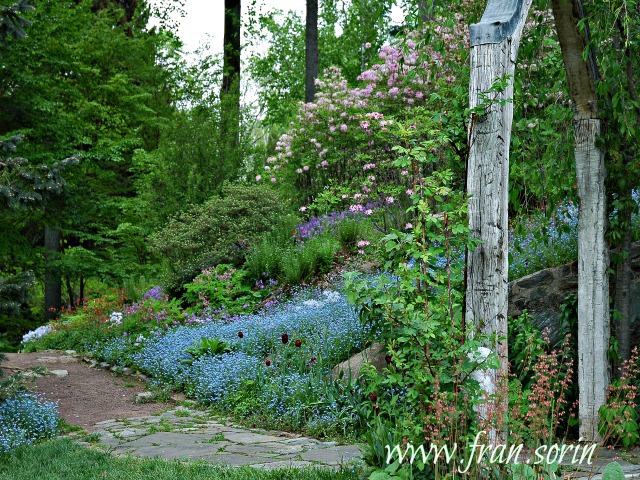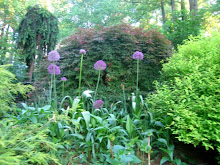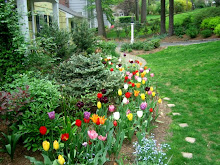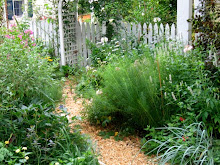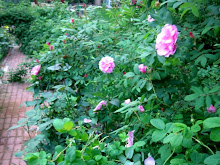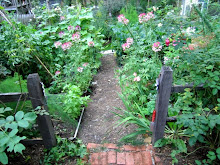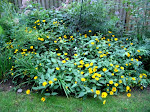Can a home gardener have a rose garden? If you have ever asked yourself that question, my answer is an unequivocal yes. Inspired by the Cranford Rose Garden at the Brooklyn Botanical Garden, I knew that I could fit a lot of roses into a small space, which I have endeavored to do in this 15' x 30' strip of a sloped suburban backyard. In this post (Part I), I'll take you on a short little walk up and down the brick path. In the next couple of days, I'll endeavor to sort through the close-ups of the individual roses and try to post at least some of them.
.
 A view of the upper right side from the Cutting Garden as you walk down towards the Children's Garden
A view of the upper right side from the Cutting Garden as you walk down towards the Children's Garden
A view of the upper left side as you walk up from the Children's Garden towards the Cutting Garden
 A view of the lower left side from outside the Rose Garden
A view of the lower left side from outside the Rose Garden 
A view of the tuters in the middle of the right side from outside the Rose Garden
 A view of the lower right side as you walk down towards the Children's Garden
A view of the lower right side as you walk down towards the Children's Garden 
A view of the lower left side as you walk down towards the Children's Garden
 A view of the lower left side as you walk up to the Cutting Garden
A view of the lower left side as you walk up to the Cutting Garden




























